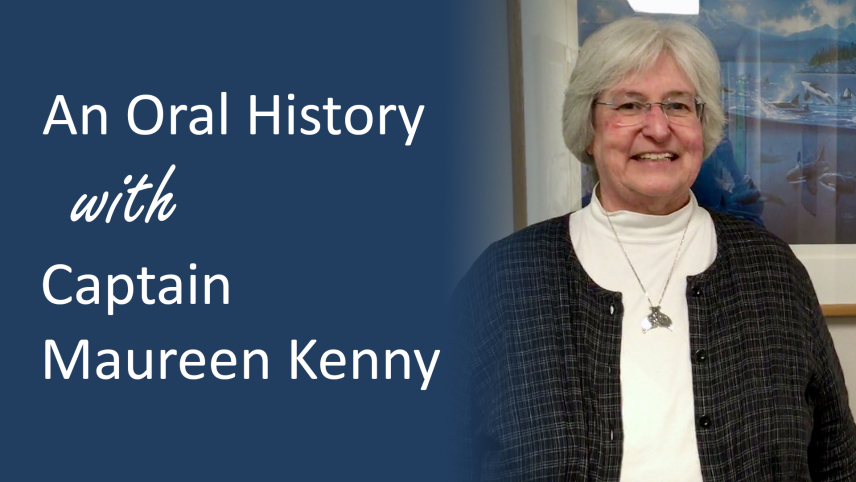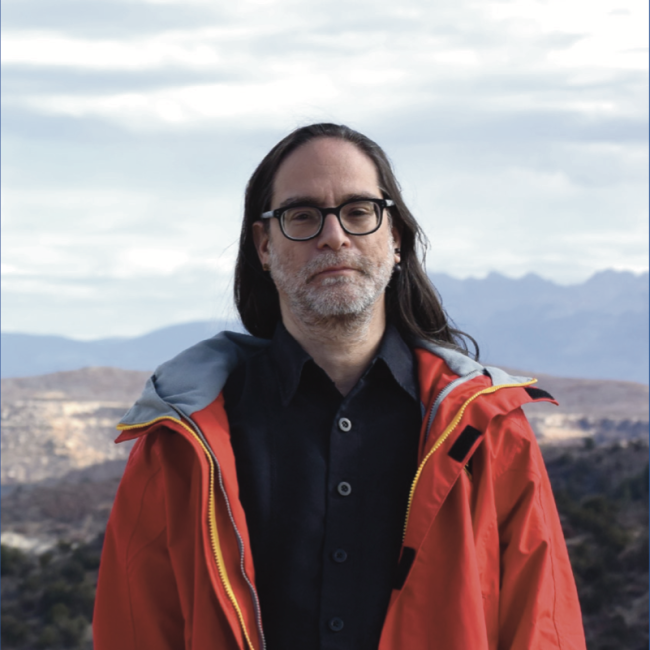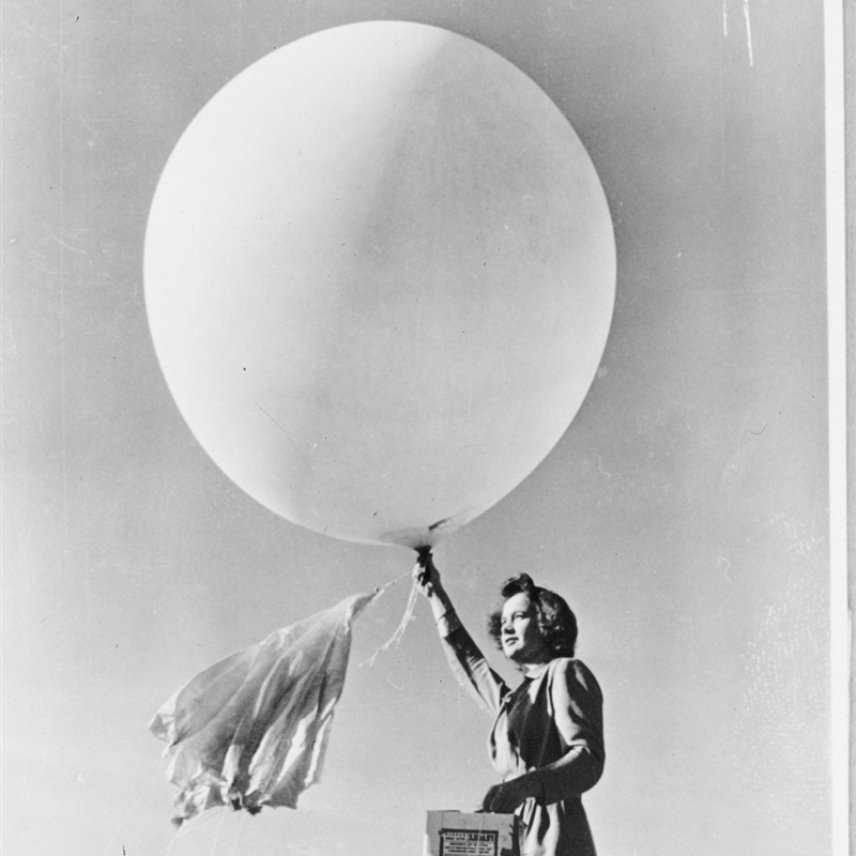This oral history was conducted by Molly Graham in 2019 as a part of the NOAA 50th Anniversary Oral History Project.

Tenure at NOAA: 1975-2016 (Image credit: NOAA Heritage)
Captain Maureen Kenny knows what it’s like to be a “first” at NOAA. She joined the NOAA Corps after college in 1975 and was one of the few female commissioned officers at the time. She became the first female officer on the NOAA Ship Davidson in Alaska and at one point was the only female aboard - an experience that shaped her early years in the Corps. Capt. Kenny has no shortage of stories from that time, including lowering her voice an octave to be taken more seriously by an all-male crew. She continued to climb the ranks, and in 1995, became commanding officer of the NOAA Ship Whiting doing surveys along the East Coast.
Throughout her more than 40-year career, Capt. Kenny saw major advances in hydrographic survey and charting technologies and quite literally wrote the book on how to use side scan sonar, a tool used to detect submerged objects. She retired from federal service in 2016, but continues to advise NOAA’s Office of Coast Survey.
Hear a snippet of the interview recorded on December 6, 2019:
Listen to the full interview with Maureen Kenny.
Transcript:
On being a woman on ships in the 1970s:
MK: Some of the men were real excited to have women on the board, and they bent over too far to try and help you out, carrying things for you and not wanting you to do things that they could do because they were used to treating women in a certain way. Others did not want us there, and they would go out of their way to make it difficult for us. I liked to think that by the end of my two years – actually, it was two and a half years out there – that I felt things had changed, and they got used to having the two women onboard. I don’t think we had any women crew members by that point yet. My next ship there were actually women crewmembers on board, too. When I asked some of the men later on, they said it was actually a good change because it was more like what society is like on the outside, instead of all these men stuck on this little ship and only in on the weekends when they could see women. They all got in trouble because of it. [laughter] So, it was a mix of how we were treated.
Being a woman came back when I was captain. We were working in Southern ports – Charleston and Cape Fear River up by Wilmington. There were times that I would get on the radio to try and contact another vessel because we wanted to arrange passing, do safe passing, and they would refuse to respond to me. I remember that happening when I was executive. Then we’d put the C.O. [commanding officer] on. He’d call, and immediately you’d get a response. They were not as accepting, even in the ’90s, of women being out there on a ship. That was a bit maddening. That’s not right. [laughter] Plus, our captain had a Southern accent, so he fit in much better. I kept saying, “I got to talk with a Southern accent here.”
Well, it's a whole different mindset - it’s the highlight of your career, I think, to be captain of your own ship, but the responsibility is very high. You’re responsible for these 36 people that are onboard the vessel with you, and you have to make the right decisions and you’re in the middle of hurricanes. [laughter] It was interesting the types of people that you get and the things that you face, and I wouldn’t trade it for anything.
On learning about NOAA as a career option:
MK: Pretty much all my classes were in the sciences. When I got to my end of my junior and I wasn’t sure what I was going to do with that math degree – I know I didn’t want to work for the IRS [Internal Revenue Service] or mortuary [sic], or some of the standard things that you go into when you’re in math. I said I better pick up a teaching certificate just in case. So I took a few classes. There weren’t very many that were required. I took the few classes, and I student-taught in the fall of my senior year. When I was there – and I was not a good teacher. [laughter] [...]
I like to think that I’ve matured more since then, and I might do a much better job. But when I was there student teaching, there was a catalog of who was coming to visit Michigan State for interviews. NOAA was listed, who I’d never heard of before. It said, “Get on a research ship and go to sea.” I went, “Ooh, that sounds good.” So I signed up for an interview. I went in. I still remember. I went in on a Wednesday. I was in the sailing club in college, and I went in after sailing, so I was in an old dirty t-shirt with paint on it and torn jeans, and my interview was for Friday. So I went in on Wednesday to research what in the world NOAA is. I went up to the front desk, and I said, “Where can I find information on NOAA?” She said, “Well, they’ve just canceled all of their Friday interviews, and he’s leaving in about twenty minutes. You might be able to get an interview now.” It’s amazing when you think how a slight change in something that you’ve done in your life could change the entire course of your life. If I had not gone in to see what in the world NOAA was, I never would have had that interview, and I probably never would have worked with NOAA. I had that interview, took that interview, and I interviewed also for the Peace Corps. Those were my only two that I interviewed for. Luckily, I was accepted into NOAA.



